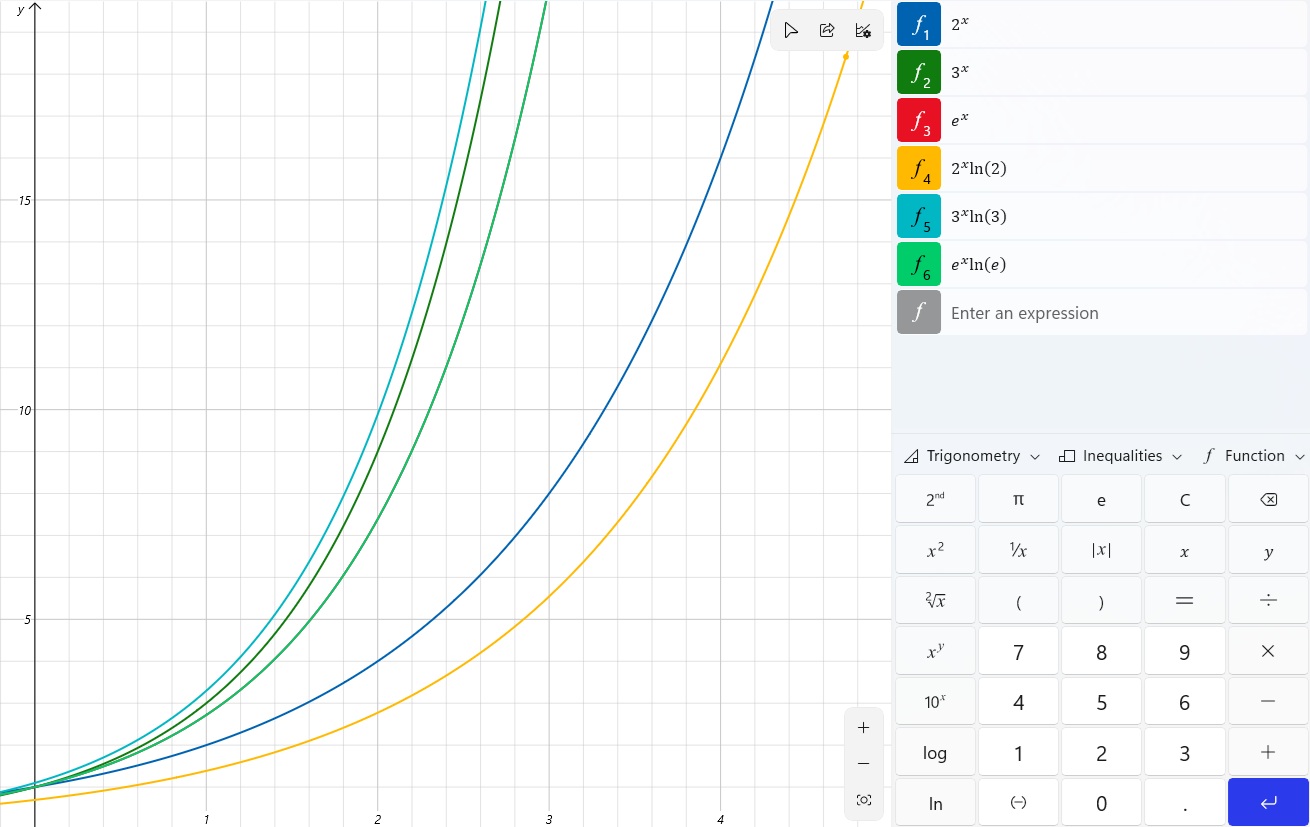Hacker Perspective: (some) Mathematical Ideas
Hardware for nerds
I only recall a few times when I experienced a near-religious ecstasy.
- When I purchased my first slide rule in grade 10 (I was attending a Canadian secondary school at the time)
- While reading the 2019 book Infinite Powers (subtitled: How Calculus Reveals the Secrets of the
Universe) by Steven Strogatz
excerpt: the answer lies in a quip that the physicist Richard Feynman made to the novelist Herman Wouk when they were discussing the Manhattan Project. Wouk was doing research for a big novel he hoped to write about World War II, and he went to Caltech to interview physicists who had worked on the bomb, one of whom was Feynman. After the interview, as they were parting, Feynman asked Wouk if he knew calculus. No, Wouk admitted, he didn’t. “You had better learn it,” said Feynman. “It’s the language God talks.” - When I purchased a Texas Instruments TI-84 Plus CE Color - Graphing Calculator
Note: "CE" stands for "Color Enhanced graphical display" which measures 320 x 240 pixels, but it really could stand for "Computer Enhanced". Why? This gadget is really a special-purpose hand-held computer running a calculator program which can be updated with software over the USB port from your PC or Mac or Linux computer. The USB port is also used to recharge the on-board lithium battery. This version can also run Python programs.
Learning to use your TI-84 Graphing Calculator
Texas Instruments has created a huge number of online resources for math and science.
- https://education.ti.com/
- https://www.youtube.com/@TICalculators (lots of stuff found here)
Unlike learning how to use a slide rule, a graphing calculator has way too many features which might trip you up for months or years. So, I suggest obtaining some professional instruction from a teacher or tutor. For those unable to access either, allow me to recommend the book "TI-84 Plus CE Graphing Calculator for Dummies" by Jeff McCalla. (read how it solved my first graphing problem shown in the table 7 approximately lines below)
- https://www.dummies.com/search/?s=calculator (book recommendations AND free online articles)
- https://www.dummies.com/search/?s=TI
- https://www.dummies.com/search/?s=ti-84
- https://www.dummies.com/book/technology/electronics/graphing-calculators/ti-84-plus-graphing-calculator-for-dummies-2nd-edition-281880/
| equation | comments | |
|---|---|---|
| 1 | 2x^2 | no problem here with this parabola |
| 2a | -2x^2 | this fails with a syntax error equation begins with a minus sign |
| 2b | (0-2)x^2 | my quick work-around |
| 2c | -2x^2 | correction from the dummies guide equation begins with the negation key |
digging into e
With your graphing calculator (either a TI-84, or the Windows-11 CALCULATOR app (remember to set it to GRAPHING)), enter these six equations then punch the graph button.

| Equation | Notes | |
|---|---|---|
| 1 | 2^x | primary |
| 2 | 3^x | primary |
| 3 | e^x | primary |
| 4 | 2^x ln(2) | derivative of #1 |
| 5 | 3^x ln(3) | derivative of #2 |
| 6 | e^x ln(e) | derivative of #3 |
- Equations 1 to 3 are the primary equations whilst equations 4 to 6 are the respective derivative equations.
- Since e is approximately 2.71828 then graph 3 will be located between graph 1 and graph 2 (but closer to graph 2)
- Equation 4 will produce a graph a little to the right of graph 1
- Equation 5 will produce a graph a little to the left of graph 2
- Equation 6 will produce a graph directly on top of graph 3 (the primary and the derivative produce the same result. How cool is that?)
| line | X | Y | Z | notes | result |
| a | 1 | 2 | 3 | the original series | |
| b | 1 | 4 | 9 | line a raised to the power of 2 | Clarke's Monolith |
| c | 1 | 6.58088 | 19.81299 | line a raised to the power of e | next gen monolith |
 Back to Home
Back to HomeNeil Rieck
Waterloo, Ontario, Canada.